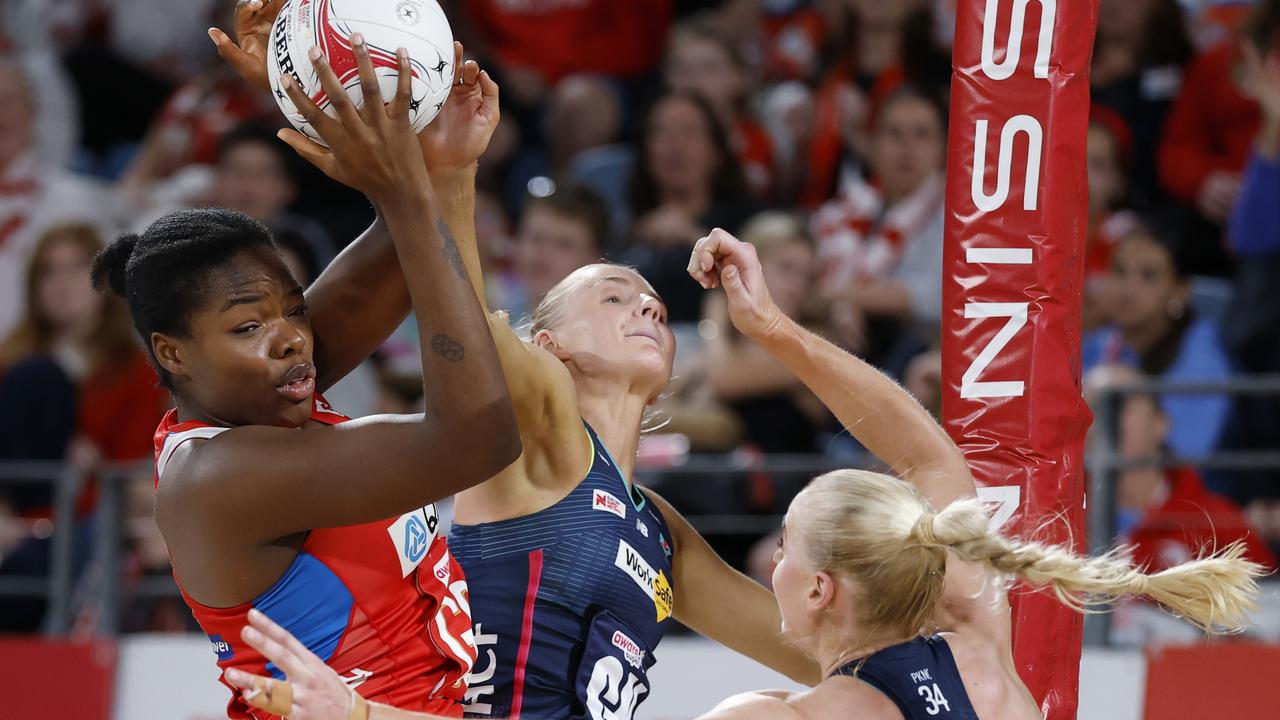Super Netball 2022: Every team’s First Nations round dress revealed
Spectacular artwork with significant stories will adorn the dresses of every Super Netball team in a eye-catching celebration of First Nations culture this weekend. See each team’s stunning designs.
Netball
Don't miss out on the headlines from Netball. Followed categories will be added to My News.
From artists working in collaboration with students, the impact of Covid on communities, warriors of the environment and safe and supportive communities, a myriad of stories are represented in the Super Netball clubs’ First Nations dresses.
The fifth edition of the competition’s First Nations round will be held over the next fortnight, affording each club the opportunity to host a match and celebrate Indigenous culture.
As well as the dresses, all games will be played with a ball decorated with the artwork
Winyar Yuringa (Women of the Sun) 2020 from Yorta-Yorta/Wurundjeri woman Simone Thomson in partnership with Dreamtime Art Creative Consultancy.
Stream Over 50 Sports Live & On-Demand with Kayo. New to Kayo? Try 14-Days Free Now >
Representation of First Nations players in the Super Netball competition remains an issue, however, Donnell Wallam’s contracting by the Queensland Firebirds gives the league — and the Firebirds — two First Nations players in Wallam and Jemma Mi Mi, who for so long has had to carry the burden of being the only Indigenous player in the league.
Wallam will enjoy a special moment this week when she runs out at Perth’s RAC Arena — the Noongar woman on her home country in her maiden First Nations appearance. She will proudly don the Firebirds dress while playing against a club wearing a design by two Noongar artists.
QUEENSLAND FIREBIRDS
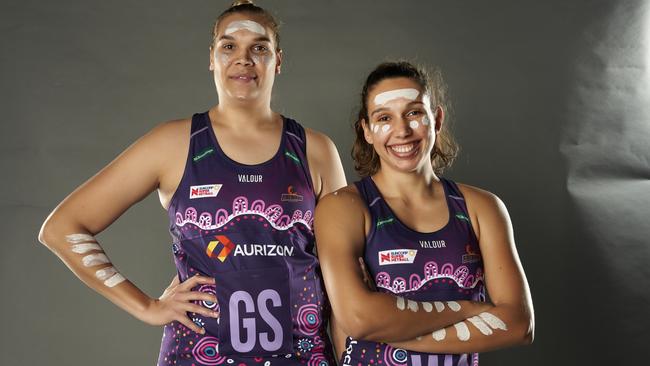
The Firebirds have the only two full-time contracted First Nations players in the league in Noongar woman Donnell Wallam and Wakka Wakka woman Jemma Mi Mi.
The club was at the centre of a furore two years ago when Mi Mi didn’t get on court in Indigenous round but has worked hard to ensure it has a culturally safe and supportive environment for all, something that’s included in its First Nations dress in the form of a heart symbol.
The dress, designed by contemporary artist and designer Rachael Sarra, from Goreng Goreng country, includes flames that represent the fire that unites all.
Four elements in the middle of the dress represent the guidance of ancestors and the spirits that give players strength when they play.
SUNSHINE COAST LIGHTNING

The Lightning’s dresses were presented to players by Kabi Kabi woman, Aunty Hope O’Chin who explained the significance of her design that features the ripples of the Sunshine Coast’s waterways, spear trees, a dragonfly and clusters that represent family grouping.
Aunty Hope said the presentation of dresses made the players part of that family.
“You’ve been blessed,” she said.
Aunty Hope told the staff and players how Indigenous children are assigned an animal name at birth “as a totemic responsibility for us to be champions and warriors of the environment.
GIANTS
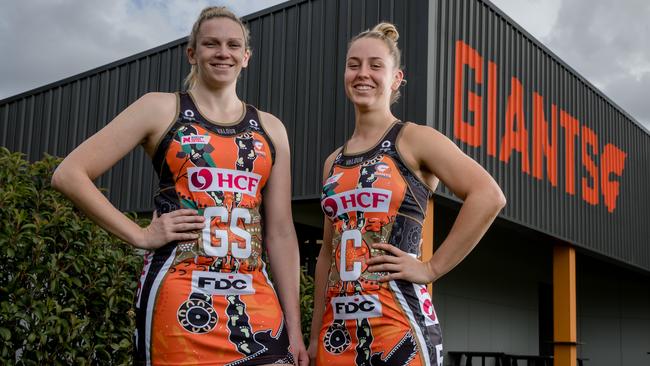
Designed by Gamilaroi woman Krystal Dallinger, the Giants’ dress tells of the impact Covid has had on communities and the struggle with the disconnection from family, friends and the normality of life.
The importance of family and friends is a value that resonates with both Dallinger and the Giants and is represented via the detailed circle in the centre of the artwork.
The inclusion of the gum tree branches across the dress represent the sentiment of feeling welcomed, with its placement on the dress a symbol of protection and to cleanse bad spirits for the person wearing it.
The black bird — a totem of Walgett, Dallinger’s native land — symbolises elders watching over us.
NSW SWIFTS

Former Swifts academy player Tarsha Hawley has again designed the club’s First Nations dress after building a connection with the team in 2021.
The proud Wongaibon woman who originally hails from Nyngan in regional NSW, has placed coolamons - traditional carrying vessels used by First Nations women - in the centre, with the circles surrounding them symbolising women and how they maintain life and functionality in a village.
Hawley’s dress design again incorporates circular bibs, specially made for First Nations round to fit with the dress.
Her use of bright colours represents the bright future she sees within Netball Australia “to symbolise present and emerging Swifts, and to hopefully have more Indigenous athletes in the league”.
MELBOURNE VIXENS
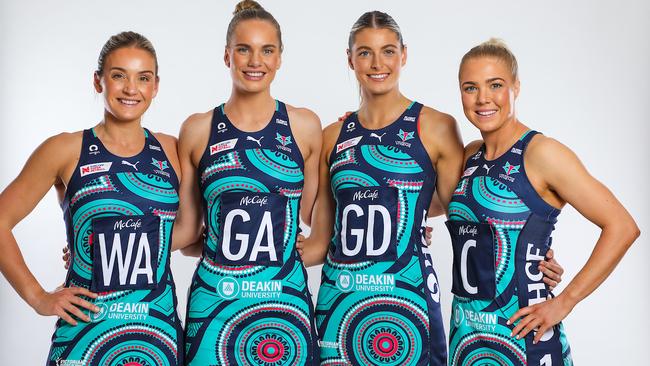
The Vixens dress is designed by Bri Apma Hayes, a proud Arrernte woman and emerging artist based on Wathaurong land in Geelong.
Bri’s family is from Arrernte country in Alice Springs, and their culture is reflected in her style of art, with the design representing unity in the form of Vixens players, coaches, staff and community coming together.
It incorporates symbols, dots, and lines to represent togetherness, fearlessness, and resilience.
Vixens training partner Gabby Coffy, a First Nations player, spoke to the playing group at the dress presentation on Monday and will address the club’s VIP function this weekend as well as appear on the Fox Sports telecast.
COLLINGWOOD MAGPIES

Collingwood’s Indigenous dress features a design by Tyson Austin and Troi Ilsley, both emerging Aboriginal artists who are proud Wamba Wamba and Gunditjmara people residing in Naarm (Melbourne) on Wurundjeri country.
The artwork tells the story of the Collingwood Football Club entering a new and exciting chapter, with falling feathers symbolic of a magpie shedding its old feathers to be replaced by new ones – reflective of the current changes of the club.
The back of the dress features a Coolamon providing a safe place for Magpie eggs to hatch and be nurtured.
This is symbolic of the new generation waiting to make their mark and take the club into an exciting new direction and the club’s involvement and support for the Aboriginal community as the club embarks on a new chapter and increased commitment to the community.
WEST COAST FEVER

West Coast Fever’s First Nations dress design was created by Noongar artists Peter Farmer and Kylie Graham.
It features Aboriginal women’s symbols to represent each member of the playing squad, alongside a series of significant waterholes in Whadjuk Country.
The Fever will line up in the dress on Saturday night playing against Noongar woman Donnell Wallam, who will make her maiden First Nations appearance in front of a large group of family and friends for the Queensland Firebirds but is thrilled to see her mob represented on the Fever dress.
ADELAIDE THUNDERBIRDS
The Adelaide Thunderbirds First Nations Dress has been designed by artist Shane “Mankitya” Cook in collaboration with the South Australian Aboriginal Secondary Training Academy (SAASTA) netball program athletes during a series of art workshops last year.

The students created artwork that explored what netball meant to them and the role it plays in the community, with Cook taking elements of the work and incorporating them into the final design.
Elements include a tree symbolic of life, roots that pay respect to grassroots netball and the SAASTA Aboriginal Netball Academy and the trunk representing Netball SA pathways.
SAASTA athletes have also designed and painted shoes for the Thunderbirds athletes which they will wear at the club’s home First Nations match in round 13.
Indigenous hopes rise for bright future
-Erin Smith
Jayden Molo and Aaleya Turner are the young faces of hope that Australian netball’s Indigenous future will shine much brighter than it’s past.
Queensland Firebirds shooter Donnell Wallam was the first Indigenous player named in a Diamonds squad in 22 years when she made the Commonwealth Games preliminary squad earlier this year.
But Wallam still faces an anxious wait to see if she will make the final 12-woman squad for Birmingham next month and become just the third Indigenous player of all time to wear the green and gold dress.
But Wallam’s meteoric rise from fringe player to Firebird starter and possibly the Diamonds is just the start of what the sport hopes is a stronger Indigenous influence in the elite game with players like Molo and Turner at the forefront of the next generation.
A record number of 10 Indigenous netballers represented their states at the Nationals in Hobart earlier this year with Molo and Turner selected in the U17 and U19 teams respectively.
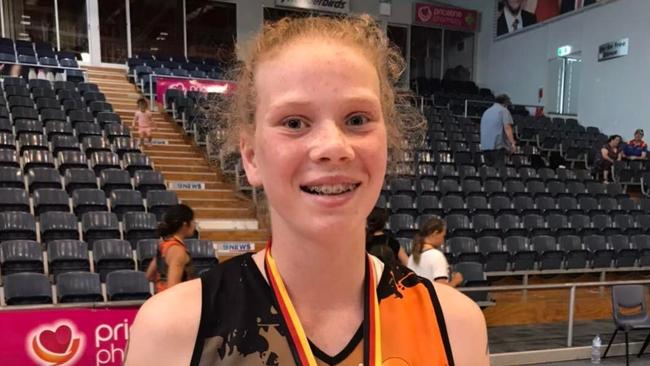
All 10 athletes were mentored by Jemma Mi Mi, who with Wallam are the only two First Nations players in the Super Netball league, through Netball Australia’s First Nations pilot mentoring program.
Molo said it was a fantastic opportunity and amazing to see so many young Indigenous netballers given a chance.
“Not many girls who are Indigenous get the chance to play at the level of Wallam and Mi Mi, hopefully there will be a lot more in future years,” the 16-year-old Queenslander said.
Molo first started playing netball when she was nine-years-old and now plays for Brisbane North Cougars in the Ruby Series — two competitions below the Super Netball. It is her first time making the National side.
“Last year I got cut in the first round which was not the best but it did give me the push to really focus and try hard for the following year and I ended up making it,” Molo said.
To Molo it is just the first of many steps towards earning the chance to wear the purple dress.
“I really look up to Wallam and Mi Mi and love watching them play, hopefully one day I might even get to play alongside them,” she said.
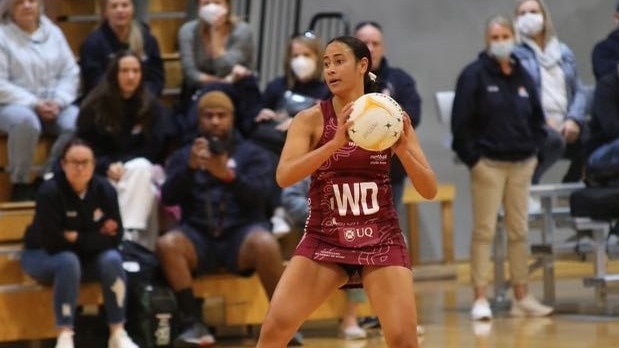
Turner was selected in the side despite rupturing her Achilles in the semi-final.
The 18-year-old is sporting a moonboot but is confident of being back on the court next season.
She grew up in a regional town outside of Adelaide, moving closer to the city when she started taking netball more seriously.
Turner has played for several clubs but said she always loved the chance to participate in the Nunga Netball carnival, a community event for Indigenous clubs in South Australia.
“We all just celebrated our culture while playing the game we love,” Turner said.
“We got to meet a lot of different girls that I am still friends with now.”
Turner, who is studying paramedicine, has a scholarship with the South Australian Sports Institute, where she trains five times a week.
She hopes the hard work will land her a spot in the Super Netball in the near future and one day the Diamonds.
“It was great to see so many Aboriginal players at the nationals because there are not many that get to play in higher leagues,” Turner said.
She was excited when she heard Wallam had been included in the Diamonds squad.
“She is an inspiration and it gives me hope that one day I can get there too,” Turner said.
More Coverage
Originally published as Super Netball 2022: Every team’s First Nations round dress revealed



